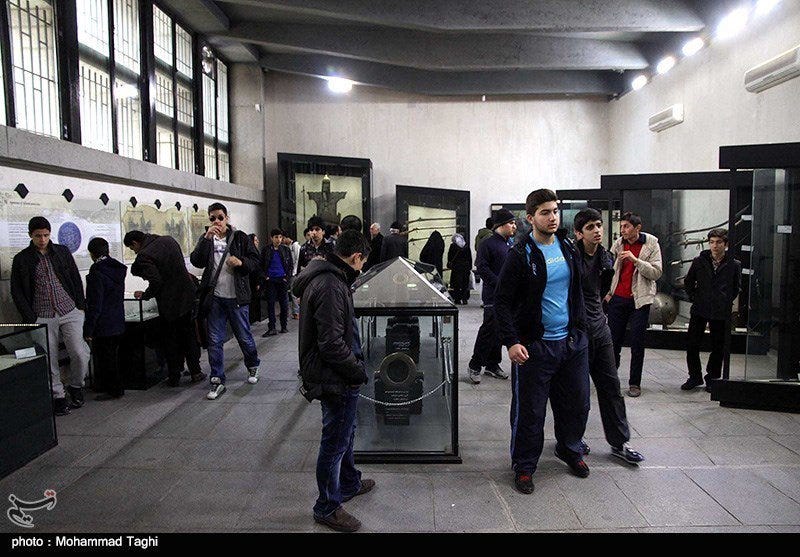Here in this mausoleum in Mashhad lie the most fearsome warrior and the most accomplished military commander Iran has produced in its modern history; Nader Shah Afshar (1688 -1747). The mausoleum is surmounted by an impressive equestrian statue, depicting the great general holding an ax, the work of renowned Iranian sculptor Abolhassan.
The museum complex has an armory and several costumes worn by the great Afshar.
Nader Shah Afshar remains a revered military hero among Anatolian Türks (Turkey), Azerbaijan, and Iran.
During a rebellion in Anatolia (Turkey), the famous Turkish bard Dadaloğlu declared: Kabaktepe asıl köyüm. Nadir Şah'tan gelir soyum (Kabaktepe is my village. From Nader Shah originates my lineage). In neighboring Azerbaijan, school history texts claim the great Afshar to be their own national hero! In Iran, only the statue of Nader Afshar stands after the 1979 Revolution —the only monarch now officially revered as a national hero.
Nader Shah Afshar's most stunning military feat was against arch-rival, the Ottoman Empire, at the Battle of Kars in 1745. Facing off an enormous 140,000 strong Ottoman army was 40,000 Iranian infantry (Qizilbash) and 40,000 of the best shock cavalry of that period, the Savaran-e Sepah, personally led by Nader Shah Afshar.
On day one, 40,000 Ottoman elite infantry (Janissary) stood facing 40,000 battle-hardened Iranian Qizilbash troops. Both infantries took severe casualties but managed to hold their positions. Then, Nader Afshar led the cavalry in a flanking attack. The spectacular speed and ferocity of the attack broke the Ottoman Janissary troops.
The Ottoman troops fought valiantly but soon they were encircled from all directions and their supply lines to Kars were cut off. The next day the Ottoman army managed to break the encirclement and retreated but they were relentlessly pursued and cut down by the Iranian cavalry; 12,000 Ottoman troops perished.
The Persians… they attacked from all sides, circling in any new direction. The ranks closed in and then they would charge and then disperse, after which this same scattered cavalry would close ranks on the same point. They would feign retreat and counter attack…1
—Vatatzes, Basile
At the end of this great battle, 8,000 Iranian troops lay dead and 12,000 Ottoman troops were killed, 18,000 wounded, and 5,000 were captured.
AXWORTHY, M. (2006). BASILE VATATZES AND HIS HISTORY OF NĀDER ŠĀH. Oriente Moderno,25 (86)(2), 331-343. Retrieved February 13, 2021, from http://www.jstor.org/stable/25818067







Such a high casualty rate...what a battle ...you'd think the world would have learned from such devastating wars.
First sentence ...lie(s)
PS I love your writing irrespective of my thoughts of you.